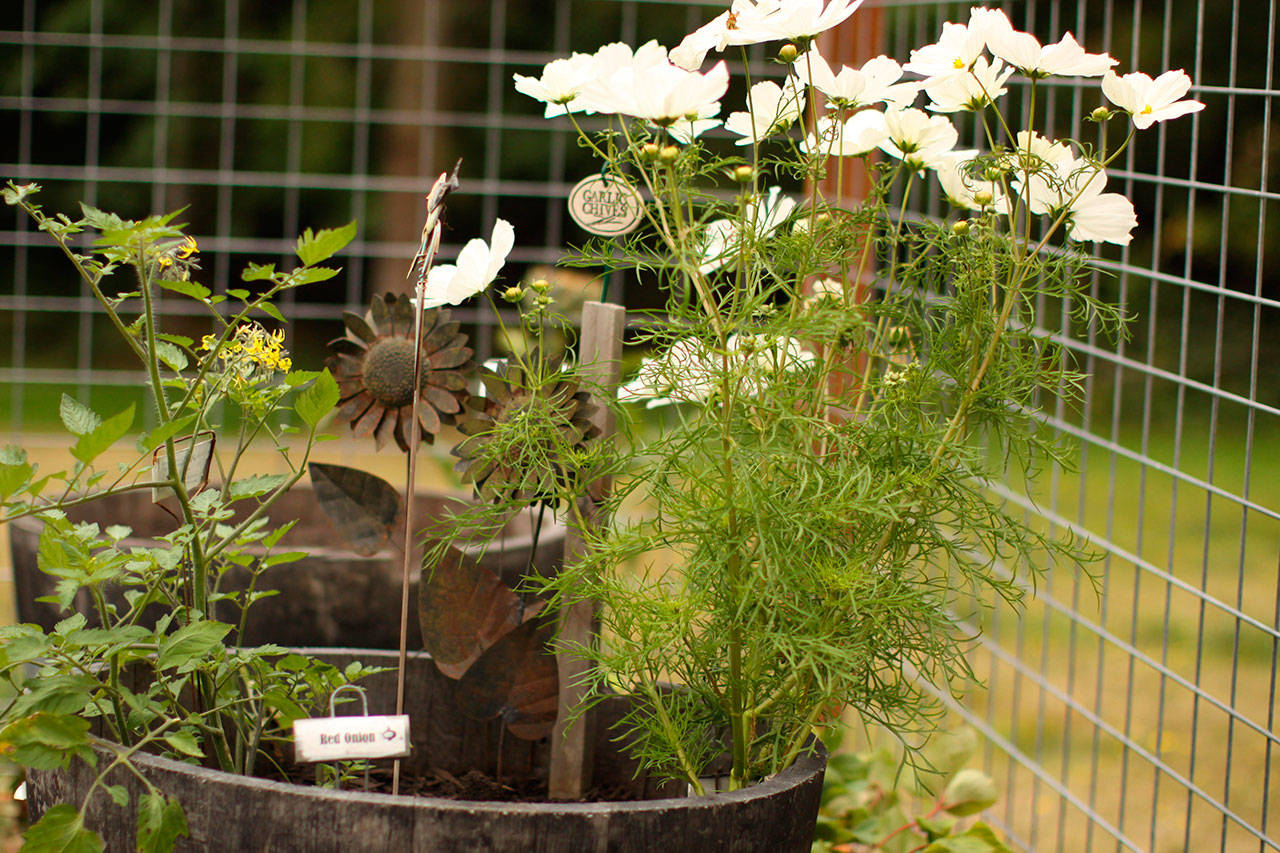Most gardeners will agree that self-sowing plants are a mixed blessing. Self-sowing plants are often called volunteers. While most of the typical garden cultivars would require you to harvest, store, and then sow collected seeds the following year, self-sowing plants produce seeds that are so hardy, they drop to the ground in autumn and pop up on their own in spring.
They can effortlessly provide a beautiful, low-cost, display of flowers year after year.
Who hasn’t appreciated the massive displays of bright red field poppies growing, at will, along the roadsides, or the mosaic of wild flowers covering a drain field?
Unfortunately, some can become nuisance weeds that somehow materialize years after the original plant was removed. A good example is yellow toadflax (Linaria dalmatica). Although lovely, it is considered a class B noxious weed in Washington state.
There are good volunteers and there are not so good volunteers. Knowing the difference and how to avoid the pitfalls of too much of a good thing is the key to enjoying the upside of these plants in your garden. More information on noxious weeds can be found at clallam.net/weed.
When selecting self-seeding plants, choose open-pollinated or heirloom varieties that will produce flowers just like the parent plant. Avoid F1 hybrid seeds since the next generation won’t be true to type.
Below are several plants that have the potential to be very good volunteers. They are perfect for cottage gardens, pollinator patches, or natural looking borders. Allow them to flourish where they happen to land or relocate them to a suitable spot. You can also collect seed pods in the fall and toss them into areas of the garden where you would like them to sprout.
To encourage self-sowing, don’t completely deadhead. Deadheading spent flowers encourages more blooms, but leave some on the plant so they can broadcast their seeds.
Calendula (Calendula officinalis)
Truly a gardener’s best friend, calendula is as beneficial as it is lovely. Bearing golden daisy-like flowers, calendula (or pot marigold) is an excellent companion plant for tomatoes, carrots, cucumber, asparagus, peas, lettuce and more.
Calendula also attracts numerous beneficial insects to the garden, including bees, butterflies and other pollinators, as well as predatory insects like ladybugs and lacewings that will feast on aphids and other “bad guy” insects.
Calendula only needs to be planted once, since this annual flower will reliably repopulate itself each season. It does best in full to part sun. Selectively deadhead to reduce the amount of seeds. Young volunteers can be easily transplanted.
Field Poppy (Papaver rhoeas)
The common field poppy is so incredibly hardy that it will grow and thrive in the poorest conditions. However, they do best in full sun. A stunning specimen with papery petals and a distinctive black center, its blooms are usually scarlet red but sometimes appear in purple or white.
It reaches 9-18 inches in height on a hairy stem with toothy leaves.
Field poppies flower from late spring to early summer. When bloom time is over, its petals drop to reveal a capsule filled with small black seeds. Once this capsule is ripe, it explodes to distribute its seeds that will quickly germinate the following season when the earth is disturbed.
Cosmos (Cosmos bipinnatus)
Cosmos is an absolute favorite and it provides a glorious display of blooms all season long, from June until the first frost. Growing up to 4 feet tall, it prefers full sun. The foliage makes cosmos easy to recognize — a bushy mass of feathery and soft needle-like leaves.
Pink, purple, and white are the most common colors, but dozens of cultivars exist. While deadheading cosmos will prolong blooming, leave spent flower heads on the plant to ensure it self-sows.
Giant Larkspur (Consolida ajacis)
Giant larkspur is a big and beautiful annual with towering floral spikes in blue, pink or white. The flowers, reaching up to 4 feet tall, have spikes holding dozens of blooms along the stem. It needs full sun for the best bloom.
After the two-month blooming period is over, the flowers give way to seed pods that contain numerous small black seeds.
Honeywort (Cerinthe major ‘Purpurascens’)
Another flower loved by bees and hummingbirds for its honey flavored nectar, honeywort blooms spring to fall. It has fleshy oval blue-green leaves that are topped with two to three tubular dangling flowers in a rich purple hue. Colorful bracts surround each floral cluster, deepening to a bright blue as the nights get cooler later in the season.
Honeywort is a good container plant that prefers full sun. In autumn, large black seeds are readily dispersed to ensure a healthy colony the following year.
These are just a small sampling of the wonderful self-sowing plants that can thrive on the Olympic Peninsula. A short list of other favorites must include: borage (Borago officinalis), California poppy (Eschscholzia), nasturtium (Tropaeolum majus), coreopsis (Coreopsis tinctoria), love-in-a-mist (Nigella damascena) and viola/pansies (Viola).
“Where flowers bloom, so does hope.” – Lady Bird Johnson
Susan Kalmar is a Clallam County WSU Master Gardener.



